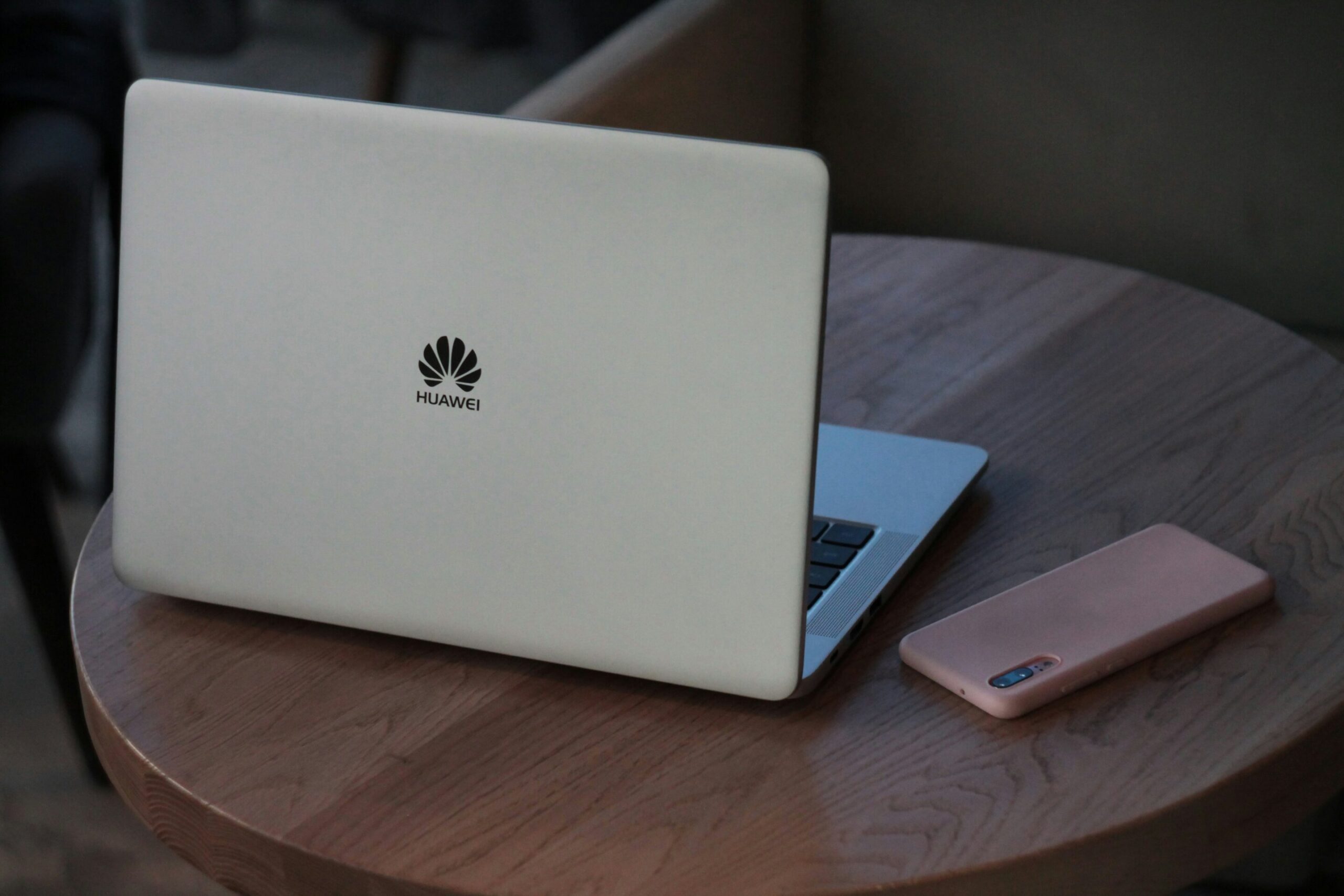Tech
Huawei unveils new computing tech as China seeks AI strength

Chinese tech juggernaut Huawei plans to launch powerful computing setups that allow chips to connect at high speeds, an executive said Thursday, as Beijing looks to bolster domestic AI prowess and reduce reliance on Western firms.
Geopolitical tensions between China and the United States have intensified technological competition between the countries, each seeking to achieve supremacy in the vital fields of artificial intelligence and advanced computer chips.
Shenzhen-based Huawei and California-based Nvidia are among the tech giants that have repeatedly been caught up in the rivalry, each facing various restrictions on their overseas operations.
Huawei’s Deputy Chairman Eric Xu said Thursday that the firm intends to launch the Atlas 950 and Atlas 960 “SuperPoDs,” part of efforts to meet “long-term computing demand,” according to a press release.
The products will be used to integrate thousands of Huawei chips, significantly enhancing the computing power that underpins various AI applications.
They are expected to be launched in the fourth quarters of 2026 and 2027, respectively, according to a copy of Xu’s speech seen by AFP.
An earlier report by state-controlled Chinese business news outlet Jiemian incorrectly stated that the Atlas 950 would launch this year.
“These two SuperPoDs will deliver an industry-leading performance across multiple key metrics, including the number of NPUs (neural processing units), total computing power, memory capacity, and interconnect bandwidth,” said Xu, quoted in the press release.
The announcement comes a day after a report by the Financial Times said China’s internet regulator had instructed domestic tech giants, including Alibaba and ByteDance to terminate orders for certain Nvidia products.
According to the FT, citing unnamed sources, the Cyberspace Administration of China ordered companies to end all testing and purchase plans for Nvidia’s RTX Pro 6000D chips, state-of-the-art processors made especially for the country.
Nvidia chief executive Jensen Huang said Wednesday that he was “disappointed” by the report.
Chinese foreign ministry spokesman Lin Jian did not confirm new restrictions when asked about the report at a regular press conference on Thursday.
“We always oppose discriminatory practices targeting specific countries when it comes to economic, trade and technology issues,” he said.
“China is willing to maintain dialogue and cooperation with all parties to protect the stability of the global supply chain.”
Observers believe that Beijing’s moves to wean Chinese tech companies off Nvidia’s offerings are part of its effort to accelerate domestic production from companies like Huawei.
The FT report also said that Beijing regulators have recently summoned Huawei and Cambricon—another domestic chipmaker—for discussions on how their products stack up against Nvidia’s chips for the Chinese market.
© 2025 AFP
Citation:
Huawei unveils new computing tech as China seeks AI strength (2025, September 18)
retrieved 18 September 2025
from https://techxplore.com/news/2025-09-huawei-unveils-tech-china-ai.html
This document is subject to copyright. Apart from any fair dealing for the purpose of private study or research, no
part may be reproduced without the written permission. The content is provided for information purposes only.
Tech
FDA Approves Pill Version of Wegovy

The US Food and Drug Administration today approved a pill version of the blockbuster anti-obesity drug Wegovy. Made by Novo Nordisk, the pill is taken once a day. The company’s original version of Wegovy is a weekly injection. Both drugs contain the same active ingredient, semaglutide.
“This allows patients with obesity who want to lose weight to have a choice between a once weekly injection or a daily tablet,” says Martin Holst Lange, chief scientific officer at Novo Nordisk.
With the soaring popularity of injectable GLP-1 drugs for weight loss, Novo Nordisk and other pharmaceutical companies have been racing to make effective pill versions that could be preferable for some patients. These drugs mimic a naturally occurring hormone in the body that acts on the brain and gut to promote a feeling of fullness.
In clinical trial results published in the New England Journal of Medicine, participants who took the pill achieved an average weight loss of 13.6 percent by 64 weeks. Nearly 30 percent of people lost 20 percent or more of their weight. The study also showed improvements in cardiovascular disease risk and physical activity levels similar to the injectable version.
While pills can sometimes be a more convenient option, patients may not always take them as prescribed, making them less effective. The clinical trial investigators estimated that in an ideal scenario where participants take the pill every day as prescribed, weight loss would be 16.6 percent—which is similar to results seen with injectable Wegovy.
Novo Nordisk first won approval for an oral semaglutide, sold under the brand name Rybelsus, in 2019 to treat type 2 diabetes. That drug has never been approved for obesity and is not as effective for weight loss as newer GLP-1 medications. The Wegovy pill is essentially a higher-dose version of Rybselsus.
“The efficacy for the obesity pill at the end of the day is driven by dose. Higher doses are required to achieve full weight-loss potential for obesity,” Lange says. The Wegovy pill is 25 milligrams while Rybelsus is 14 milligrams.
The most common side effects of oral Wegovy include nausea and vomiting, which are also side effects of the injectable version.
Novo has not disclosed the exact timeline for the drug’s launch, but Lange says it will be available sometime in the first few months of 2026. Production of the medication is already underway at Novo Nordisk’s US manufacturing sites, and the company expects to have enough of the drug to meet US demand.
Tech
Mold Is the Enemy. A Good Dehumidifier Is the Solution

The first thing to think about is how you’re going to drain the water from the dehumidifier. In the basement, the best thing you can do is to use the dehumidifier’s continuous water drain tube to either the sump pump or a drain. If those options are not available, you might be emptying the tank multiple times a day. The first time I put a dehumidifier in the basement, the tank was filled in three hours’ time. It’s all about the drainage. Also, knowing how to read a label. If you have a 50-pint humdidifier that means the appliance can remove 50 pints of moisture from the air in a 24-hour period; it’s not the internal tank capacity. Also, look for the maximum area coverage. For example, the Honeywell Smart 50 pint can remove 50 pints of water from 4,000 sq ft—the size of a whole house—in 24 hours.
If you, like me, also need a dehumidifier in your city apartment, then consider buying one that’s easy to move around with wheels and a handle. Some of these machines are heavy. Also, a small dehumidifier in the bathroom is a good idea to keep the dampness at bay, especially if you have mold growing on your grout.
Lastly, do not drink the water collected in your dehumidifier tank. That water is not potable. Pour it down the drain. A dehumidifier is not creating distilled water; that’s a different process and appliance.
Tech
The Justice Department Released More Epstein Files—but Not the Ones Survivors Want

Over the weekend, the Justice Department released three new data sets comprising files related to Jeffrey Epstein. The DOJ had previously released nearly 4,000 documents prior to the Friday midnight deadline required by the Epstein Files Transparency Act.
As with Friday’s release, the new tranche appears to contain hundreds of photographs, along with various court records pertaining to Epstein and his associates. The first of the additional datasets, Data Set 5, is photos of hard drives and physical folders, as well as chain-of-custody forms. Data Set 6 appears to mostly be grand jury materials from cases out of the Southern District of New York against Epstein and his coconspirator, Ghislaine Maxwell. Data Set 7 includes more grand jury materials from those cases, as well as materials from a separate 2007 Florida grand jury.
Data Set 7 also includes an out-of-order transcript between R. Alexander Acosta and the DOJ’s Office of Professional Responsibility from 2019. According to the transcript, the OPR was investigating whether attorneys in the Southern District of Florida US Attorney’s Office committed professional misconduct by entering into a non-prosecution agreement with Epstein, who was being investigated by state law enforcement on sexual battery charges. Acosta was the head of the office when the agreement was signed.
Leading up to the deadline to release materials, the DOJ made three separate requests to unseal grand jury materials. Those requests were granted earlier this month.
The initial release of the Epstein files was met with protest, particularly by Epstein victims and Democratic lawmakers. “The public received a fraction of the files, and what we received was riddled with abnormal and extreme redactions with no explanation,” wrote a group of 19 women who had survived abuse from Epstein and Maxwell in a statement posted on social media. Senator Chuck Schumer said Monday that he would force a vote that would allow the Senate to sue the Trump administration for a full release of the Epstein files.
Along with the release of the new batch of files over the weekend, the Justice Department also removed at least 16 files from its initial offering, including a photograph that depicted Donald Trump. The DOJ later restored that photograph, saying in a statement on X that it had initially been flagged “for potential further action to protect victims.” The post went on to say that “after the review, it was determined there is no evidence that any Epstein victims are depicted in the photograph, and it has been reposted without any alteration or redaction.”
The Justice Department acknowledged in a fact sheet on Sunday that it has “hundreds of thousands of pages of material to release,” claiming that it has more than 200 lawyers reviewing files prior to release.
-

 Business1 week ago
Business1 week agoStudying Abroad Is Costly, But Not Impossible: Experts On Smarter Financial Planning
-

 Business1 week ago
Business1 week agoKSE-100 index gains 876 points amid cut in policy rate | The Express Tribune
-

 Fashion5 days ago
Fashion5 days agoIndonesia’s thrift surge fuels waste and textile industry woes
-

 Sports1 week ago
Sports1 week agoJets defensive lineman rips NFL officials after ejection vs Jaguars
-

 Business5 days ago
Business5 days agoBP names new boss as current CEO leaves after less than two years
-

 Tech1 week ago
Tech1 week agoFor the First Time, AI Analyzes Language as Well as a Human Expert
-

 Entertainment1 week ago
Entertainment1 week agoPrince Harry, Meghan Markle’s 2025 Christmas card: A shift in strategy
-

 Tech5 days ago
Tech5 days agoT-Mobile Business Internet and Phone Deals


















